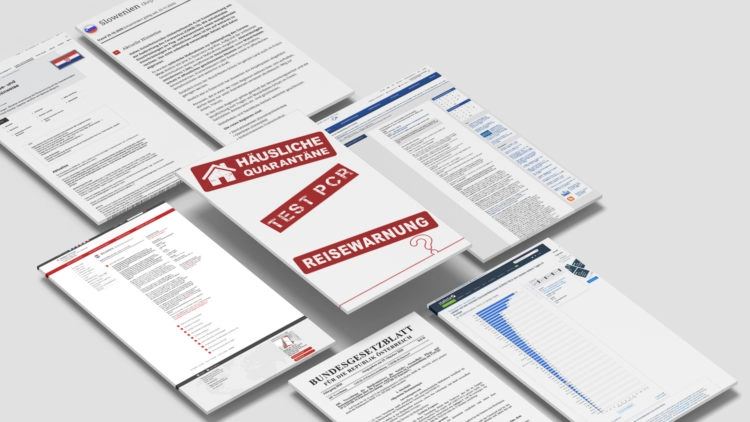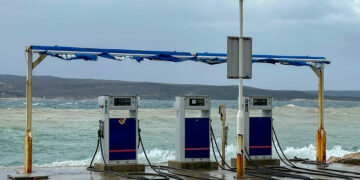Anyone who still wants to travel from Germany or Austria to the Adriatic Sea to Italy, Slovenia or Croatia will hardly find their way through the jungle of mutual travel warnings in the context of the Corona Pandemic. One wrong decision, and at home, quarantine and one, sometimes two expensive PCR tests threaten. The SeaHelp editorial team once took the trouble to thoroughly sift through the thicket of travel warnings so that you can see at a glance what you are allowed to do and what you should leave alone or approach with extreme caution in times of corona virus.
German travel warning for almost all of Austria
One however in front: If Austria’s Minister of Health Anschober in the German television on the occasion of the German travel warning for Austria with the words, he is not a friend of inflationary mutual travel warnings can be quoted, is before this background again recalled, how he proceeded even at that time with the topic travel warning Croatia. Those of its compatriots, who stood 14 hours and longer in the traffic jam, will surely not forget that so fast.
Travel warning Austria for Croatia
The Austrian Foreign Ministry informs on its homepage that a partial travel warning (security level 5) exists for Croatia in connection with the spread of the coronavirus (COVID-19) for the entire national territory with the exception of the regions Brod-Posavina, Istria, Koprivnica-Križevci, Osijek-Baranja, Šibenik-Knin, Varaždin and Zadar. [mapsvg id=”24553″]
The official text continues: For the regions (Brod-Posavina, Istria, Koprivnica-Križevci , Osijek-Baranja, Šibenik-Knin, Varaždin and Zadar) a High Security Risk (Security Level 4) applies. Continued restrictions on air travel and travel and extensive restrictions on public life are to be expected for the time being. Therefore, we do not recommend travel that is not absolutely necessary. Without restrictions (PCR test/quarantine) one may only enter Austria from the regions of Brod-Posavina, Istria, Koprivnica-Križevci, Osijek-Baranja, Šibenik-Knin, Varaždin, Zadar.
Travel Warning Germany for Croatia
Germany warns up-to-date (conditions 22.10.2020) before journeys into the following regions of Croatia, whose counties are considered at present as risk areas: Bjelovar-Bilogora (since 24 October), Dubrovnik-Neretva (since 9 September), degree (city) Zagreb (since 17 October), Krapina-Zagorje (since 7 October, Lika-Senj (since 23 September), Međimurje (since 17 October), Požega-Slavonia (since 9 September), Sisak-Moslavina (since 7. October), Split-Dalmatia (since August 20), Varaždin (since October 24), Virovitica-Podravina (since September 16), Vukovar-Syrmia (since October 7), Karlovac (since October 24), Osijek-Baranja (since October 24), Zagreb (since October 24). The popular coastal regions of Istria, Sibenik and Zadar are excluded from the travel warning, while the counties of Karlovac, Osijek-Baranja, Zagreb, Varaždin and Bjelovar-Bilogora have recently been added as risk areas. [mapsvg id=”24548″]
Travel Warning Austria for Slovenia
Slovenia has a high security risk (security level 4) in connection with the spread of the coronavirus (COVID-19). From 23.10.2020 the coastal region (between Koper and Portoroz) is also a red zone. This means that the whole of Slovenia is a red zone. Here you can also read on the page of the Austrian Foreign Ministry: From Slovenia you can enter Austria without any restrictions.
Travel Warning Germany for Slovenia
In Slovenia, the following regions are considered risk areas for German tourists: Pomurska (since 17 October), Posavska (since 24 October), Primorsko-Notranjska (since 23 September), Savinjska (since 7 October), Zasavska (since 7 October). The Posavska and Goriška regions were recently added as risk areas. Here is the link. [mapsvg id=”24551″]
Travel Warning Austria for Italy
You can also read about this on the homepage of the Austrian Foreign Ministry: For the whole of Italy as well as for the Vatican (Holy See) and San Marino high security risk (security level 4) applies in connection with the spread of the corona virus (COVID-19). All persons entering Italy must carry the duly completed self-declaration form with them throughout their journey. More information here. Austrians are not currently subject to quarantine obligations for travel from Italy either.
Travel Warning Germany for Italy
The following travel warnings apply to German citizens who currently intend to travel to Italy: Abrruzzo (since October 24), Valle d’Aosta (since October 24), Emilia-Romagna (since October 24), Friuli-Venezia Giulia (since October 24), Campania (since October 17), Lazio (since October 24), Liguria (since October 17) Lombardy (since October 24), Piedmont (since October 24), Sardinia (since October 24), Tuscany (since October 24), Umbria (since October 24), Veneto (since October 24), autonomous province of Bolzano-Alto Adige (since October 24). Here the link.
Is Croatia treated differently by the Austrians?
If one looks at the 7-day incidences (as of 23. 10. 2020), it is noticeable that the Austrian government obviously gives Croatia, which is particularly popular among Austrian holidaymakers, special treatment compared to Slovenia: While the 7-day incidence value for Slovenia is 250.9 (as of October 21, 2020), only warning level 4 applies, and warning level 5 applies to Croatia with the exception of the coastal regions of Istria, Sibenik, and Zadar (warning level 4), although Croatia only has a 7-day incidence of 144. That means: Whoever enters Austria from Slovenia does not have to go into quarantine, whoever enters Croatia (except Istria, Sibenik, Zadar) must go into quarantine or show a PCR test. Against this background, the Austrian Ministry of Health should actually reflect on the statements of its minister.
Transit always possible
Despite the travel warnings – a transit through Slovenia, Austria or Italy is possible at any time. However, due to the rapid development of the Corona pandemic, we recommend checking the current situation at the destination before starting your journey. This applies in particular to local measures to contain the pandemic in the respective destination area.













